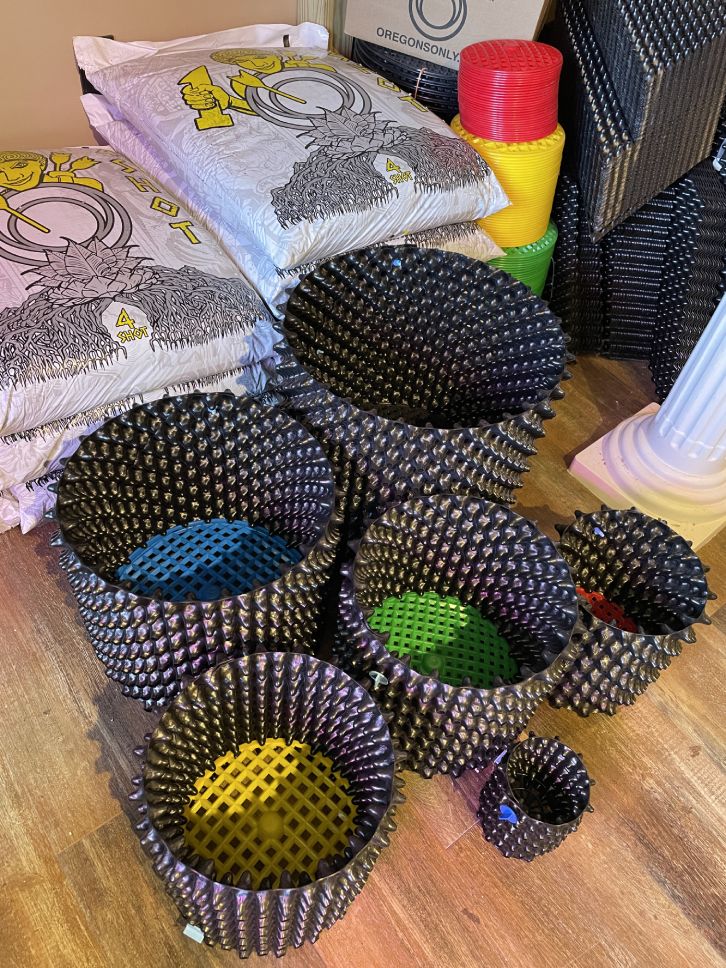Opening the Potential of Hydroponics: Comprehending Its Makes Use Of and Different Types
Hydroponics, a method of growing plants without soil, has amassed increasing focus for its prospective to reinvent farming and horticulture practices. The accuracy control over nutrient delivery, water usage, and ecological variables uses a glimpse right into a future where food manufacturing can be enhanced in various setups. As we navigate through the intricate landscape of hydroponic systems and techniques, it becomes apparent that each strategy holds unique advantages and constraints. By unwinding the varied uses and sorts of hydroponics, we can uncover a globe of opportunities that might improve how we picture sustainable farming and horticulture methods.
Advantages of Hydroponic Solutions

Another benefit of hydroponic systems is the capability to grow plants in a smaller room. By getting rid of the demand for soil, plants can be grown vertically or in stacked systems, making the most of the usage of available space. This is especially useful in urban locations or regions with restricted cultivatable land. In addition, hydroponic systems decrease the threat of soil-borne illness and pests, as there is no soil to harbor these dangers. This results in much healthier plants and decreases the demand for hazardous chemicals, making hydroponic farming an extra lasting and ecologically pleasant alternative.
Typical Uses in Agriculture

Offered the efficient water preservation and space-saving advantages of hydroponic systems, it is obvious that these cutting-edge farming approaches have located common uses in different fields of farming. The regulated setting of hydroponic systems makes it possible for year-round cultivation, supplying a consistent supply of fresh fruit and vegetables no matter of external weather condition problems.
Hydroponics is generally used for growing a range of crops, consisting of leafed eco-friendlies, tomatoes, cucumbers, strawberries, herbs, and peppers. Its adaptability encompasses upright farming, city agriculture, and greenhouse manufacturing. Furthermore, hydroponic systems are used in study and academic settings to research plant farming, nutrition, and growth strategies. The versatility and efficiency of hydroponics make it a useful tool in contemporary agriculture, dealing with the difficulties of sustainability, food safety and security, and source optimization.
Exploring Various Hydroponic Techniques
Hydroponic systems use a range of approaches that provide to various plant types and farming objectives. In addition, the Ebb and Flow system, likewise known as the Flooding and Drain system, periodically floodings the plant origins with nutrient solution, allowing for oxygenation during draining periods. Each of these techniques showcases the versatility and performance of hydroponic systems in boosting plant growth and yield.
Comparing Different Hydroponic Solutions
Checking out the performance and you can try these out return improvement strategies in hydroponics leads us to contrast different hydroponic systems available for plant cultivation. Each hydroponic system has its one-of-a-kind attributes, advantages, and limitations, making it critical for cultivators to pick the most suitable system based on their certain needs and restrictions.
Among one of the most common hydroponic systems is the nutrient movie strategy (NFT), where a thin movie of nutrient remedy constantly moves over the plant roots. This system is valued for its water performance and suitability for growing leafed eco-friendlies and natural herbs. In comparison, the deep water culture (DWC) system immerses plant origins straight right into the nutrient option, supplying adequate oxygen and nutrients. The DWC system is economical and reasonably simple, making it a popular choice for novices.
An additional popular hydroponic system is the ebb and flow (or flood and drain) system, which regularly floods the plant roots with nutrient solution before draining it. By comprehending the differences in between these hydroponic systems, farmers can make educated choices to optimize plant yield and quality.
Advancements in Hydroponic Modern Technology
One crucial development is the advancement of clever hydroponic systems that make use of sensing units and automation to keep Get More Info track of and adjust ecological conditions such as pH levels, nutrient concentrations, and light direct exposure in real-time. These systems enable precise control over expanding problems, leading to optimum plant growth and greater crop yields.
Another remarkable development is the combination of upright farming strategies with hydroponic systems, permitting the growing of plants in stacked layers. This vertical approach takes full advantage of space utilization, making it optimal for urban environments where land availability is restricted - The Indoor Earthworm. In addition, making use of innovative LED lighting systems customized to certain plant requirements has actually enhanced energy efficiency and boosted development rates in hydroponic arrangements
Developments like these are driving the evolution of hydroponics, making it a highly attractive and lasting option for modern-day farming.
Final Thought
To conclude, hydroponics provides many benefits in farming and has numerous strategies and systems that can be used to optimize its this content capacity. Developments in hydroponic innovation remain to improve performance and sustainability in food production. By comprehending the uses and various sorts of hydroponic systems, farmers and cultivators can unlock the full potential of this innovative approach of expanding plants without soil.
Additionally, hydroponic systems allow for far better control over nutrient degrees, pH equilibrium, and environmental problems, leading to much healthier plants and greater returns.

Comments on “Transform Your Growing Experience with The Indoor Earthworm's Advancement”